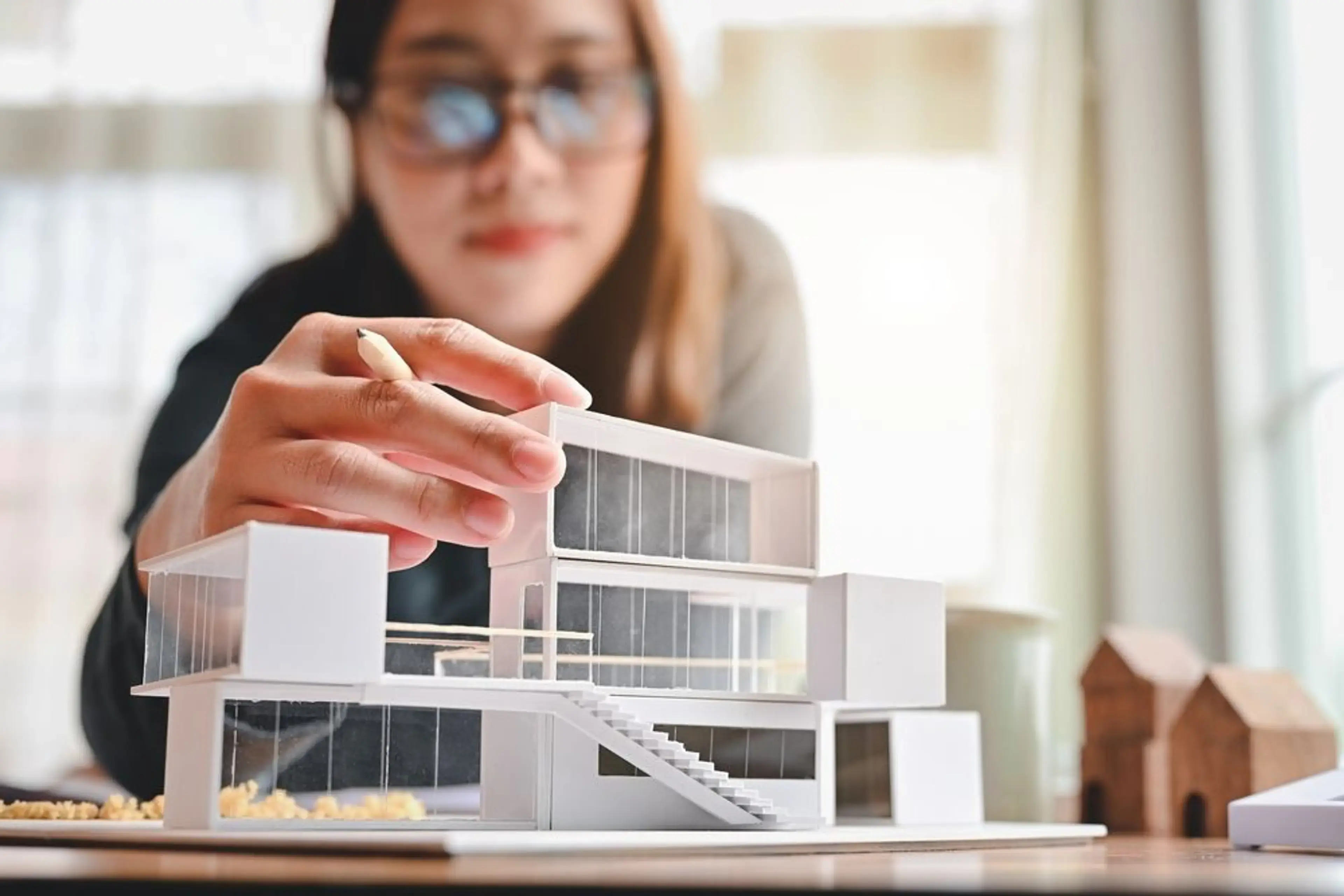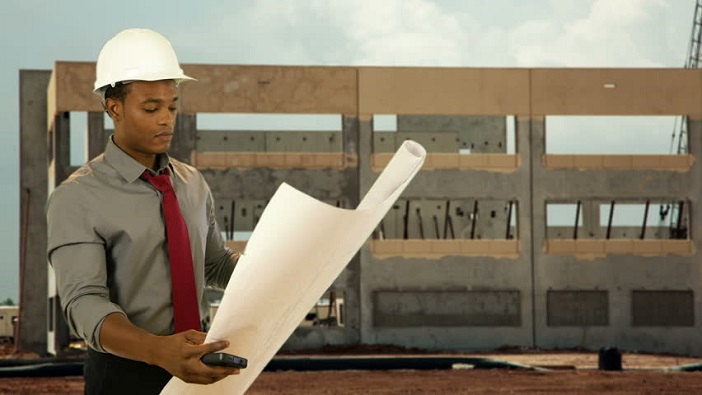Architect Tips for Designing Current Residential Spaces
Architect Tips for Designing Current Residential Spaces
Blog Article
Comprehending the Diverse Profession Paths Available for Aspiring Architect
As an ambitious Architect, you have a globe of career courses waiting for you. Each course offers unique challenges and chances to use your creativity and technical expertise. Whether you're drawn to standard design or the subtleties of lasting style, there's a particular niche that straightens with your passions. Understanding these varied choices can form your expert trip, yet which direction will you pick to discover first?
Conventional Design: Designing Structures and structures
Traditional style focuses on creating structures and frameworks that blend functionality with aesthetic charm. As you explore this area, you'll value the detailed balance between kind and purpose. You'll learn to draw ideas from historical styles, integrating elements like proportion, materials, and workmanship. Your designs can reflect social heritage, showcasing regional customs while meeting modern requirements.
You'll create skills in preparing, model-making, and site evaluation, enabling you to envision and connect your ideas successfully. Engaging with customers, you'll need to recognize their vision and convert it right into practical designs.
Moreover, developing codes and sustainability methods are vital in your work, ensuring your structures are secure and eco-friendly. As you expand in your profession, you'll discover opportunities in property, commercial, or even repair jobs, each offering one-of-a-kind challenges. Welcoming conventional style paves the way for a satisfying career that admires the past while shaping the future.
Urban Preparation: Shaping Areas and Public Spaces
As an ambitious Architect, you can play a vital role as a city planner, changing how neighborhoods engage and operate. By employing area interaction approaches, you'll guarantee that citizens have a voice in forming their setting. Plus, incorporating lasting design principles will aid create areas that not only satisfy today's requirements but additionally safeguard the future.
Duty of Urban Planners
While numerous could think about architects as the single dreamers behind structures, city organizers play a crucial function fit the wider landscape of communities and public areas. They evaluate land use, zoning legislations, and area requires to develop sustainable settings that boost high quality of life. By teaming up with numerous stakeholders, you'll aid develop parks, transportation systems, and household areas that promote social interaction and access. Urban planners additionally focus on environmental considerations, ensuring that growths integrate green areas and assistance biodiversity. Your knowledge in spatial style and community characteristics permits you to picture future growth while protecting cultural heritage. In this important function, you'll directly influence how people experience their environments, making every job a possibility for positive modification.
Area Involvement Strategies
Reliable neighborhood engagement approaches are crucial for metropolitan organizers to ensure that the voices of residents are heard and valued in the planning process. To cultivate purposeful dialogue, you must focus on open forums and workshops where area participants can express their concepts and concerns. Usage studies and social media sites to get to a wider target market, making certain diverse perspectives are included. Teaming up with regional companies can boost depend on and help with much deeper connections. It is essential to give clear details concerning decision-making processes and proposed jobs, permitting residents to feel informed and empowered. By proactively incorporating and listening responses, you'll create spaces that show the community's demands, eventually leading to more lasting and successful metropolitan settings. Welcome openness and constant dialogue for enduring influence.
Sustainable Layout Concepts
When creating urban areas, including lasting style concepts is important for developing environments that flourish both environmentally and socially. Think about incorporating eco-friendly rooms, like gardens and parks, to enhance biodiversity and improve air quality.
Designing with water conservation in mind is likewise vital-- think of rainfall gardens and absorptive surfaces to manage stormwater. Entailing community participants during the planning procedure guarantees that the areas you develop satisfy their demands and motivate social interaction. By embracing these concepts, you'll add to lively, sustainable urban landscapes that benefit everyone.

Landscape Design: Producing Sustainable Exterior Environments
As you check out landscape style, you'll find important style principles that produce useful and attractive exterior rooms. Sustainable methods play an essential role in guaranteeing these atmospheres thrive while decreasing environmental influence. And also, you'll discover a variety of career opportunities that permit you to make a genuine distinction in exactly how individuals communicate with nature.
Design Principles in Landscape
Recognizing style principles in landscape style is crucial for producing sustainable outdoor environments that balance with nature. You'll need to ponder elements like proportion, equilibrium, and scale to guarantee your layouts really feel cohesive and welcoming. Including native plants not only improves biodiversity however additionally decreases water use, making your landscape resistant. Consider the flow of space and just how people interact with it; pathways and seating areas need to invite exploration and leisure. In addition, take note of seasonal modifications, designing with products that match the surroundings year-round (Architect). By focusing on sustainability and looks, you can create exterior areas that improve the neighborhood and advertise health. Welcoming these principles will set a solid structure for your profession in landscape architecture.
Sustainable Practices Introduction
Sustainable techniques in landscape design not just focus on aesthetics yet also prioritize eco-friendly health and wellness and source preservation. You can develop areas that advertise soil wellness, such as using natural materials and exercising permaculture concepts. Inevitably, these techniques assure your styles profit both people and the setting for years to come.
Job Opportunities Expedition
With a strong foundation in lasting techniques, landscape style provides a selection of career courses that enable you to make a meaningful influence on the environment. You could work as a landscape designer, producing visually pleasing and functional outside spaces, or concentrate on eco-friendly reconstruction, aiding to restore broken communities. Urban organizers frequently collaborate with landscape architects to develop eco-friendly areas in city setups, improving city livability. If you're enthusiastic concerning education and learning, consider becoming a landscape style teacher, inspiring future generations. Furthermore, you could deal with nonprofits concentrated on environmental sustainability or involve in research to innovate brand-new methods. Each path not just shapes beautiful settings however additionally fosters a healthier earth for future generations.
Lasting Design: Concentrating On Eco-Friendly Practices
As you discover your occupation in architecture, welcoming green techniques can establish you apart in a competitive area. Sustainable style concentrates on developing buildings that reduce ecological influence while improving owner well-being. By incorporating renewable products, energy-efficient systems, and lasting building techniques, you'll add to a greener future.
Beginning by acquiring knowledge of environment-friendly accreditations like LEED or BREEAM, which can reinforce your credentials. Think about just how all-natural light, ventilation, and thermal effectiveness can enhance design. Work together with designers and ecological specialists to innovate remedies that minimize waste and preserve resources.
Don't fail to remember the significance of area involvement-- engaging regional stakeholders can motivate styles that integrate with the setting. As clients significantly focus on sustainability, your know-how in green methods will not just draw in tasks however also meet your passion for accountable architecture. Embrace this essential aspect of the occupation, and enjoy your occupation grow.
Historical Conservation: Protecting and Recovering Cultural Heritage
While you begin on your building journey, think about the vital role of historical preservation in keeping our social heritage. This field concentrates on the security and repair of substantial buildings, websites, and structures that inform the tales of our past. By involving in historical preservation, you'll assist protect the architectural legacy that forms community identity.
As a historic preservation Architect, you'll evaluate historical significance and assess the problem of frameworks. You'll function closely with conservationists and historians to ensure authentic reconstruction methods are employed. This job path enables you to blend creative thinking with study, allowing you have a peek here to design services that respect initial materials and workmanship.
Your job not just adds to sustainability by recycling existing structures however additionally fosters a feeling of pride within neighborhoods. Embracing this path will certainly help you end up being a guardian of history, preserving the stories and looks that improve our lives.
Interior Style: Enhancing Indoor Spaces
Historical preservation and indoor style both share a dedication to boosting the constructed atmosphere, however they concentrate on various aspects. While historic preservation emphasizes maintaining a framework's cultural and historic worth, indoor style absolutely nos in on maximizing indoor rooms for performance and appearances.
As an aspiring Architect, you'll locate that indoor architecture permits you to mix creativity with technological skills. You'll design areas that not only look excellent yet also advertise comfort and efficiency. This area includes understanding exactly how light, color, and materials communicate within an area, affecting mood and usability.
You'll deal with numerous jobs, from household homes to commercial workplaces, ensuring that each setting fulfills the needs of its occupants. By prioritizing individual experience, you can change interiors into motivating and practical rooms, making a significant effect on how individuals connect with their environments. Embrace the opportunity to boost interior settings and shape the method individuals live and function.
Industrial Design: Combining Functionality With Looks
Commercial layout plays a crucial role in developing products that seamlessly blend aesthetic appeals with performance, making sure that what you utilize day-to-day is not just aesthetically attractive but likewise functional. As an aspiring Architect, you could immerse on your own in this field, concentrating on making whatever from furniture to customer electronic devices. Your work entails comprehending customer requirements, materials, and making procedures, allowing you to produce innovative options that improve daily experiences.
In industrial design, you'll commonly team up with engineers, marketing professionals, and suppliers, making sure that your designs are not just beautiful but additionally feasible. This career course provides a vibrant environment where imagination meets usefulness, making it a fulfilling selection for engineers interested in shaping the products of tomorrow.
Frequently Asked Inquiries
What Educational Certifications Do I Required to End Up Being an Architect?
To end up being an architect, you'll require a professional degree in architecture, commonly a Bachelor's or Master's. Additionally, you'll need to complete an internship and pass the Architect Registration Exam to practice lawfully.
Exist Accreditation Needs for Various Building Career Paths?
Yes, there're accreditation needs for various architectural paths. Architect. You'll need to pass exams, total teaching fellowships, and sometimes pursue specialized training, depending upon your chosen focus, like landscape style, urban layout, or historical preservation
What Software Skills Are Crucial for Engineers Today?

How Can I Gain Practical Experience While Studying Style?
You can gain sensible experience by interning at architectural companies, joining layout competitors, volunteering for area projects, or working together with schoolmates on real-world projects. These chances improve your abilities and develop important connections in the sector.
What Job Opportunities Exist Outside Conventional Design Firms?
You can discover various job chances outside conventional architecture firms, like metropolitan planning, interior decoration, landscape design, construction monitoring, genuine estate advancement, and even duties in sustainability consulting. Each offers one-of-a-kind challenges and rewards.
Whether you're drawn to standard architecture over here or the nuances of lasting layout, there's a specific niche that lines up with your interests.When making metropolitan areas, incorporating sustainable style principles is crucial for producing settings that grow both ecologically and socially.As you explore landscape style, you'll find vital design concepts that produce practical and lovely exterior areas.Recognizing layout principles in landscape design is necessary for developing sustainable outside settings that integrate with nature.In industrial layout, you'll often collaborate with manufacturers, engineers, and marketing professionals, ensuring that your styles are not only stunning yet also practical.
Report this page